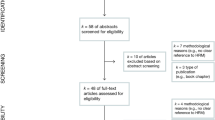Abstract
Negotiating is one of the four major decisional roles played by managers. In fact, resolving conflict is said to occupy 20% of a manager's working hours. This growing frequency of negotiation scenarios coupled with the increasing complexity of the issues which need to be resolved in a negotiation make the possibility of computer enhancement for negotiation very appealing. Implementations of computerized Negotiation Support Systems (NSS) in the business world, international affairs, labor law, and environmental and safety disputes have demonstrated their potential for making negotiation problems more manageable and comprehensible for negotiators. Still, pioneers in NSS research have expressed their dismay at the lack of rigorous empirical research and evaluation of NSS. In particular, research is needed which will determine how and under what circumstances negotiation processes can be enhanced by NSS support.
This article describes empirical research on the effects of a highly structured, interactive NSS on the outcome of face-to-face issues resolution and the attitudes of negotiators in both low- and high-conflict situations. In a laboratory experiment, bargaining dyads played the roles of manufacturers negotiating a four-issue, three-year purchase agreement for an engine subcomponent in conditions of high and low conflict of interest. The results of the study showed that NSS support did help bargainers achieve higher joint outcomes and more balanced contracts, but that the NSS support increased negotiation time. Satisfaction was greater for NSS dyads in both conflict levels, and perceived negative climate was reduced in low conflict.
One primary implication of the results of this study is that NSS developers should keep in mind the importance of providing users with a system with interactive qualities which not only enhance the decision-making process but also provide them with a sense of participation in reaching the solution, as was done in this study.
Similar content being viewed by others
References
Anson, R., and M.T. Jelassi. (1990). “A Developmental Framework for Computer-Supported Conflict Resolution.”European Journal of Operational Research 46(2), 181–199.
Antrim, L.N., and D.A. Lax. (1987). “Support and Analysis for International Commercial Debt Negotiations.” Working Paper Series, WP-10, Program on the Processes of International Negotiation, American Academy of Arts and Sciences, Cambridge, MA.
Balke, W., K. Hammond, and G. Meyer. (1973). “An Alternative Approach to Labor-Management Relations.”Administrative Science Quarterly 18, 311–327.
Bartos, O.J. (1978). “A Simple Model of Negotiation: A Sociological Point of View.” In I.W. Zartman (ed.),The Negotiation Process: Theories and Applications. Beverly Hills, CA: Sage Publications.
Bazerman, M.H., and M.A. Neale. (1983). “Heuristics in Negotiation: Limitations to Dispute Resolution Effectiveness.” In M.H. Bazerman and R.J. Lewicki (eds.),Negotiation in Organizations. Beverly Hills, CA: Sage Publications.
Brehmer, B. (1976). “Social Judgment Theory and the Analysis of Interpersonal Conflict.”Psychological Bulletin 83, 985–1003.
Campbell, D.T., and J.C. Stanley. (1969).Experimental and Quasi-Experimental Designs for Research. Chicago, IL: Rand-McNally.
Carmel, E., and B.C. Herniter. (1989). “MEDIANSS: Conceptual Design of a System for Negotiation Sessions.”DSS-89 Transactions, 239–256.
Carmel, E., B.C. Herniter, and J.R. Nunamaker, Jr. (1993). “Labor-Management Contract Negotiations in Electronic Meeting Room: A Case Study.”Group Decision and Negotiation 2(1), 27–60.
Davis, F.D. (1985). “A Technology Assessment Model for Empirically Testing New End-User Information Systems: Theory and Results.” Unpublished doctoral dissertation, Massachusetts Institute of Technology.
Delaney, M., A. Foroughi, and W. Perkins. (1992). “An Empirical Study of the Efficacy of a Computerized Negotiation Support System (NSS).”Proceedings of the 1992 Annual Meeting of the Midwest Decision Sciences Institute, 79–81.
Dennis, A.R., J.F. George, L.M., Jessup, J.F. Nunamaker, Jr., and D.R. Vogel. (1988). “Information Technology to Support Electronic Meetings.”MIS Quarterly 12(4), 591–624.
DeSanctis, G., and R.B. Gallupe. (1987). “A Foundation for the Study of Group Decision Support Systems.”Management Science 33(2), 589–609.
Eden, C. (1992). “A Framework for Thinking About Group Decision Support Systems (GDSS).”Group Decision and Negotiation 1(3), 199–218.
Einhorn, H., and R. Hogarth. (1978). “Confidence in Judgment: Persistence of the Illusion of Validity.”Psychology Review 85, 395–416.
Erickson, B., J. Holmes, R. Frey, L. Walker, and J. Thibaut. (1974). “Functions of a Third Party in the Resolution of Conflict: The Role of a Judge in Pretrial Conferences.”Journal of Personality and Social Psychology 30, 293–306.
Farber, H.S. (1981). “Divergent Expectations, Threat Strategies, and Bargaining under Arbitration.” Presented to the Econometric Society, San Diego, CA.
Fisher, R. (1978).International Mediation: A Working Guide. New York: International Peace Academy.
Foroughi, A., and M.T. Jelassi. (1990a). “NSS Solutions to Major Negotiation Stumbling Blocks.”Proceedings of the 23rd Annual Hawaii International Conference on System Sciences, Vol. 4:Emerging Technologies and Applications Track. Kailua-Kona, Hawaii, pp. 2–11.
Foroughi, A., and M.T. Jelassi. (1990b). “Interactive Negotiation Support Systems: Results of an Experimental Study.”Bulletin of the TIMS/ORSA Joint National Meeting (29). Las Vegas, Nevada, p. 116.
Foroughi, A., and W.C. Perkins. (1989). “An Empirical Study of the Effects of Computer Negotiation Support Systems (NSS) on Negotiation Outcomes and Negotiator Attitudes.”Proceedings of the Decision Sciences Institute 20th Annual Meeting. Vol. 1, pp. 648–650.
Fouraker, L.E., and Siegel, S. (1963).Bargaining Behavior. New York: McGraw-Hill.
Gallupe, R.B. (1986). “Experimental Research into Group Decision Support Systems: Practical Issues and Problems.”Proceedings of the 19th Annual HICSS, pp. 515–524.
Gallupe, R.B. (1985). “The Impact of Task Difficulty on the Use of a Group Decision Support System.” Unpublished doctoral dissertation, University of Minnesota.
George, J., G. Easton, J.F. Nunamaker, Jr., and G. Northcraft. (1990). “A Study of Collaborative Group Work With and Without Computer-Based Support.”Information Systems Research 4, 394–415.
Herniter, B.C., E. Carmel, and D.R. Vogel. (1990). “A Comparison of Visual Displays of Negotiation Support Systems.”Proceedings of the 23rd Annual Hawaii International Conference on Systems Sciences, Vol. 4:Emerging Technologies and Applications Track. Kailua-Kona, Hawaii, pp. 12–21.
Hiltrop, J.M., and J.Z. Rubin. (1981). “Position Loss and Image Loss in Bargaining.”Journal of Conflict Resolution 25, 521–534.
Jarke, M., M.R. Jelassi, and M.F. Shakun. (1987). “Mediator: Towards a Negotiation Support System.”European Journal of Operational Research 31(3), 314–334.
Jarke, M., and M.T. Jelassi. (1986). “View Integration in Negotiation Support Systems.”Transactions of the Sixth International Conference on Decision Support Systems, Washington, DC, pp. 180–188.
Jelassi, M.T., and A. Foroughi. (1989). “Negotiation Support Systems: An Overview of Design Issues and Existing Software.”Decision Support Systems: The International Journal (Special Issue on Group Decision Support Systems) 5(2), 167–181.
Jelassi, M.T., and B.H. Jones. (1988). “Getting to Yes with NSS: How Computers Can Support Negotiations.” In R.M. Lee, A.M. McCosh, and P. Migliarese (eds.),Organizational Decision Support Systems. Amsterdam: North-Holland.
Jones, B.H. (1988). “Analytical Negotiation: An Empirical Examination of the Effects of Computer Support for Different Levels of Conflict in Two-Party Bargaining.” Doctoral dissertation, School of Business, Indiana University, Bloomington, IN.
Kelley, H.H. (1966). “A Classroom Study of the Dilemmas in Interpersonal Negotiations.” In K. Archibald (ed.),Strategic Interaction and Conflict: Original Papers and Discussion. Berkeley, CA: Institute of International Studies.
Kersten, G.E., W. Michalowski, S. Szpakowicz, and Z. Koperczak. (1991). “Restructurable Representations of Negotiation.”Management Science 37(10), 1269–1290.
Kersten, G.E. (1987). “Two Roles Decision Support Systems can Play in Negotiations.”Information Processing and Management 23(6), 605–614.
Kersten, G. (1985). “NEGO-Group Decision Support System.”Information and Management 8, 237–246.
Kessler, S. (1978).Creative Conflict Resolution: Mediation Leader's Guide. Washington, DC: National Institute for Professional Training.
Lewicki, R., and J. Litterer. (1985).Negotiation. Homewood IL: Richard D. Irwin, Inc.
Lim, L.H., and I. Benbasat. (1992). “From Negotiation to Negotiation Support Systems: A Theoretical Perspective.”Proceedings of the 25th Annual HICSS, 153–163.
McGrath, J. (1984).Groups, Interaction and Performance. Englewood Cliffs, NJ: Prentice-Hall.
Miner, F. (1979). “A Comparative Analysis of Three Diverse Group Decision Making Approaches.”Academy of Management Journal 22(1), 81–93.
Morley, I., and G. Stephenson. (1977).The Social Psychology of Bargaining. London: Allen and Unwin.
Nunamaker, J.F., Jr. (1989). “Experience with and Future Challenges in GDSS (Group Decision Support Systems): Preface.”Decision Support Systems 5, 115–118.
Nunamaker, J.F., Jr., A. Dennis, J. Valacich, D. Vogel, and G. George. (1991a). “Electronic Meeting Systems to Support Group Work.”Communication of the ACM 43(7), 40–61.
Nunamaker, J.F., Jr., A.R. Dennis, J.S. Valacich, and D.R. Vogel. (1991b). “Information Technology for Negotiating Groups: Generating Options for Mutual Gain.”Management Science 37(10), 1325–1346.
Nyhart, J.D., and C. Goeltner. (1987). “Computer Models as Support for Complex Negotiations.” Working Paper Series WP-10, The Program on the Processes of International Negotiation, American Academy of Arts and Sciences, Cambridge, MA.
Pilisuk, N., and P. Skolnick. (1978). “Inducing Trust: A Test of the Osgood Proposal.”Journal of Personality and Social Psychology, 8, 121–133.
Poole, M.S., M. Holmes, and G. DeSanctis. (1991). “Conflict Management in a Computer-Supported Meeting Environment.”Management Science 37(8), 926–953.
Pruitt, D.G. (1981).Negotiation Behavior. New York: Academic Press.
Pruitt, D.G. (1983). “Achieving Integrative Agreements.” In M.H. Bazerman and R.J. Lewicki (eds.),Negotiating in Organizations. Beverly Hills, CA: Sage Publications.
Raiffa, H. (1982).The Art and Science of Negotiations. Cambridge, MA: Belknap/Harvard University Press.
Rubin, J.Z., and B. Brown. (1975).The Social Psychology of Bargaining and Negotiation. New York: Academic Press.
Sainfort, F., D.J. Gustafson, and L.K. Bosworth. (1987). “Experimental Evaluation of a Computer-Based Conflict Resolution Program.” Paper presented at TIMS/ORSA Joint Meeting, New Orleans, LA.
Sambamurthy, V., and M.S. Poole. (1992). “The Effects of Variations in Capabilities of GDSS Designs on Management of Cognitive Conflict in Groups.”Information Systems Research 3(3), 224–251.
Shea, G.F. (1983).Creative Negotiating. Boston: CNI Publishing.
Sheffield, J. (1992). “The Effects of Bargaining Orientation and Communication Medium on Negotiation.”Proceedings of the 25th Annual HICSS, pp. 174–184.
Siegel, S., and D.L. Harnett. (1964). “Bargaining Behavior: A Comparison Between Mature Industrial Personnel and College Students.”Operations Research 12, 334–343.
Tversky, A. and D. Kahnemen. (1981). “The Framing of Decisions and the Psychology of Choice.”Science 211, 453–458.
UNISYS Corporation. (1987). “Computer Assisted Negotiation at the American Academy of Arts and Sciences.” Cambridge, MA.
Walton, R.E., and R.B. McKersie. (1965).A Behavioral Theory of Labor Negotiations. New York: McGraw-Hill Book Company.
Zartman, I.W., and M.R. Berman. (1982).The Practical Negotiator. New Haven, CT: Yale University Press.
Author information
Authors and Affiliations
Rights and permissions
About this article
Cite this article
Foroughi, A., Perkins, W.C. & Jelassi, M.T. An empirical study of an interactive, session-oriented computerized Negotiation Support System (NSS). Group Decis Negot 4, 485–512 (1995). https://doi.org/10.1007/BF01409712
Issue Date:
DOI: https://doi.org/10.1007/BF01409712




